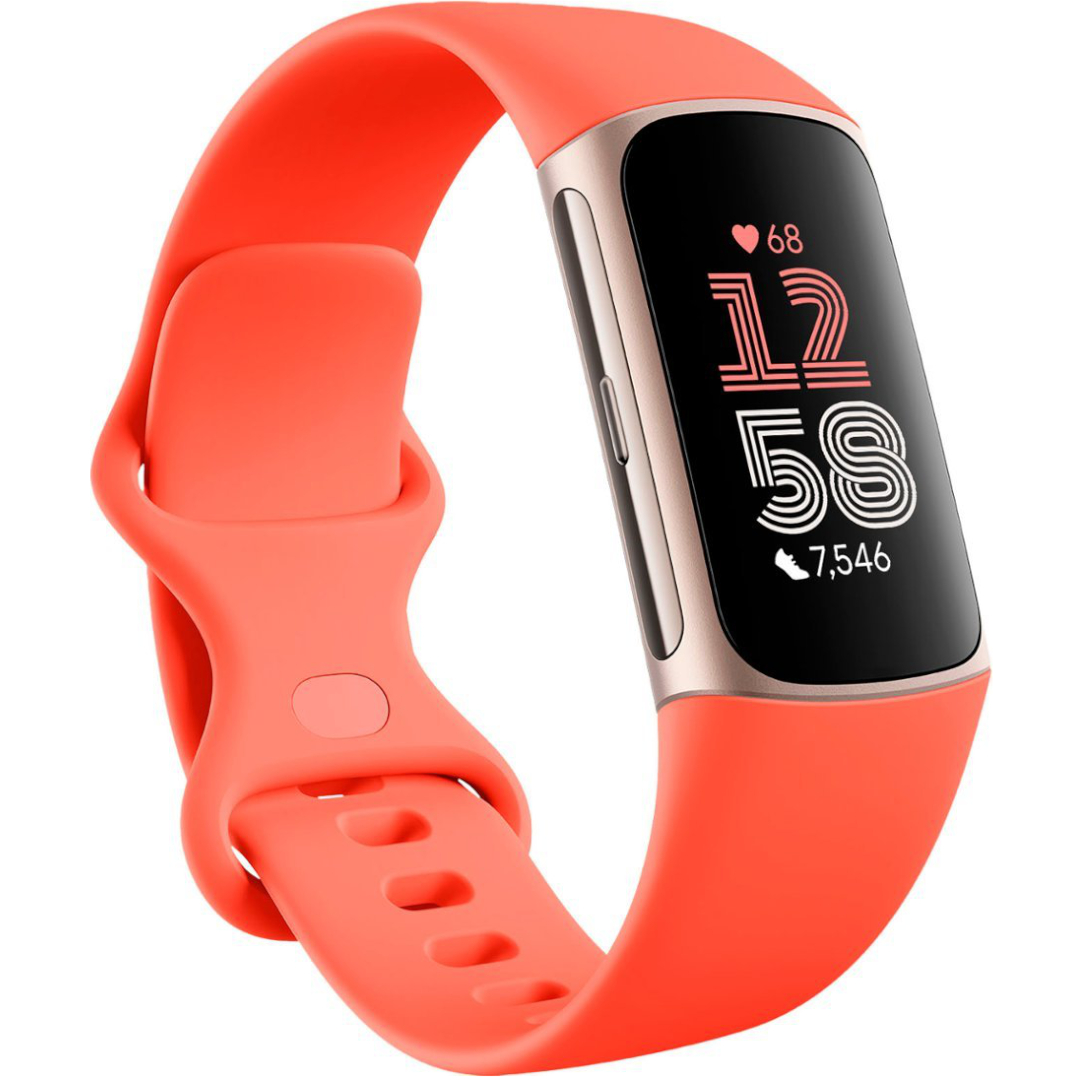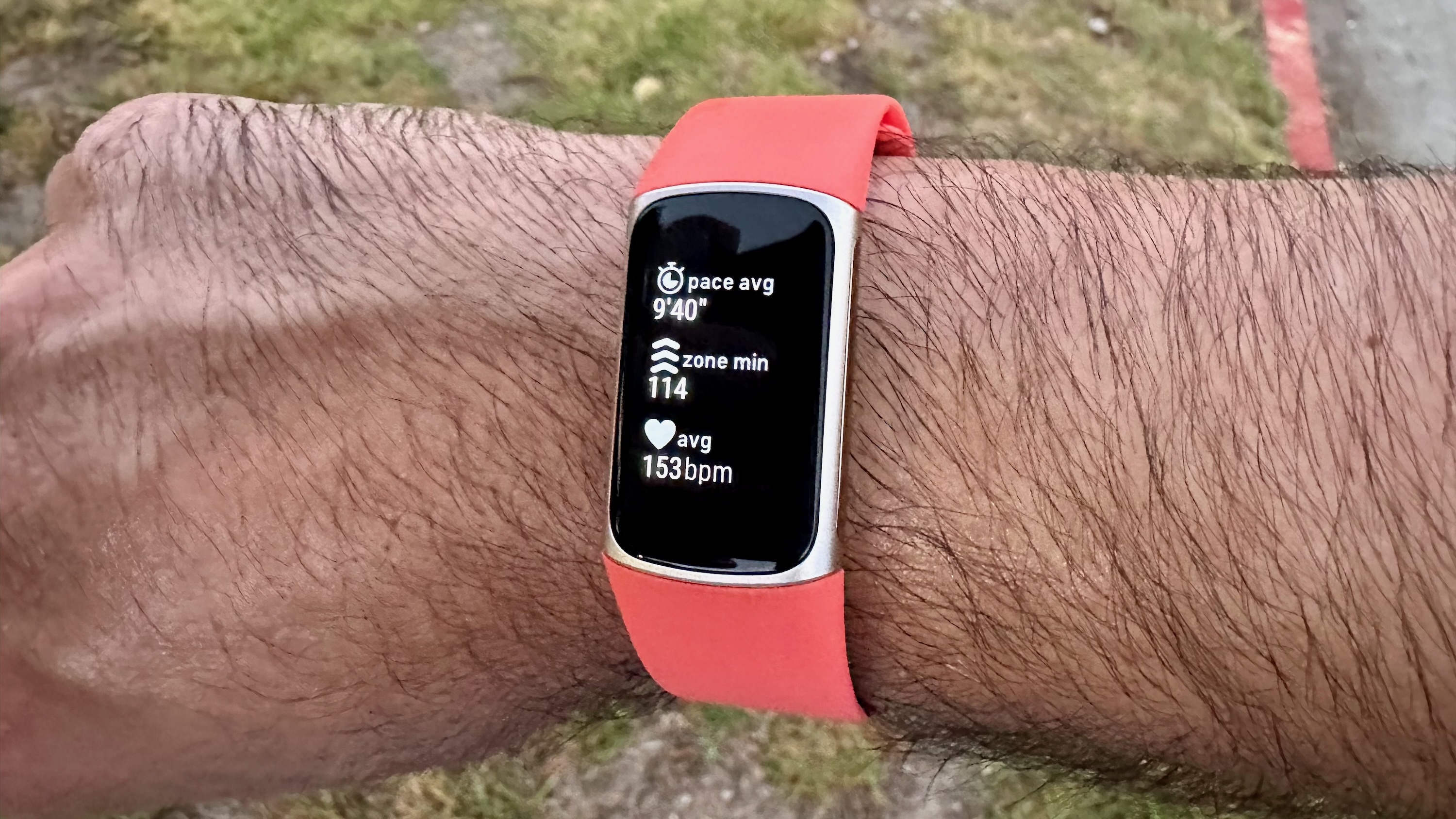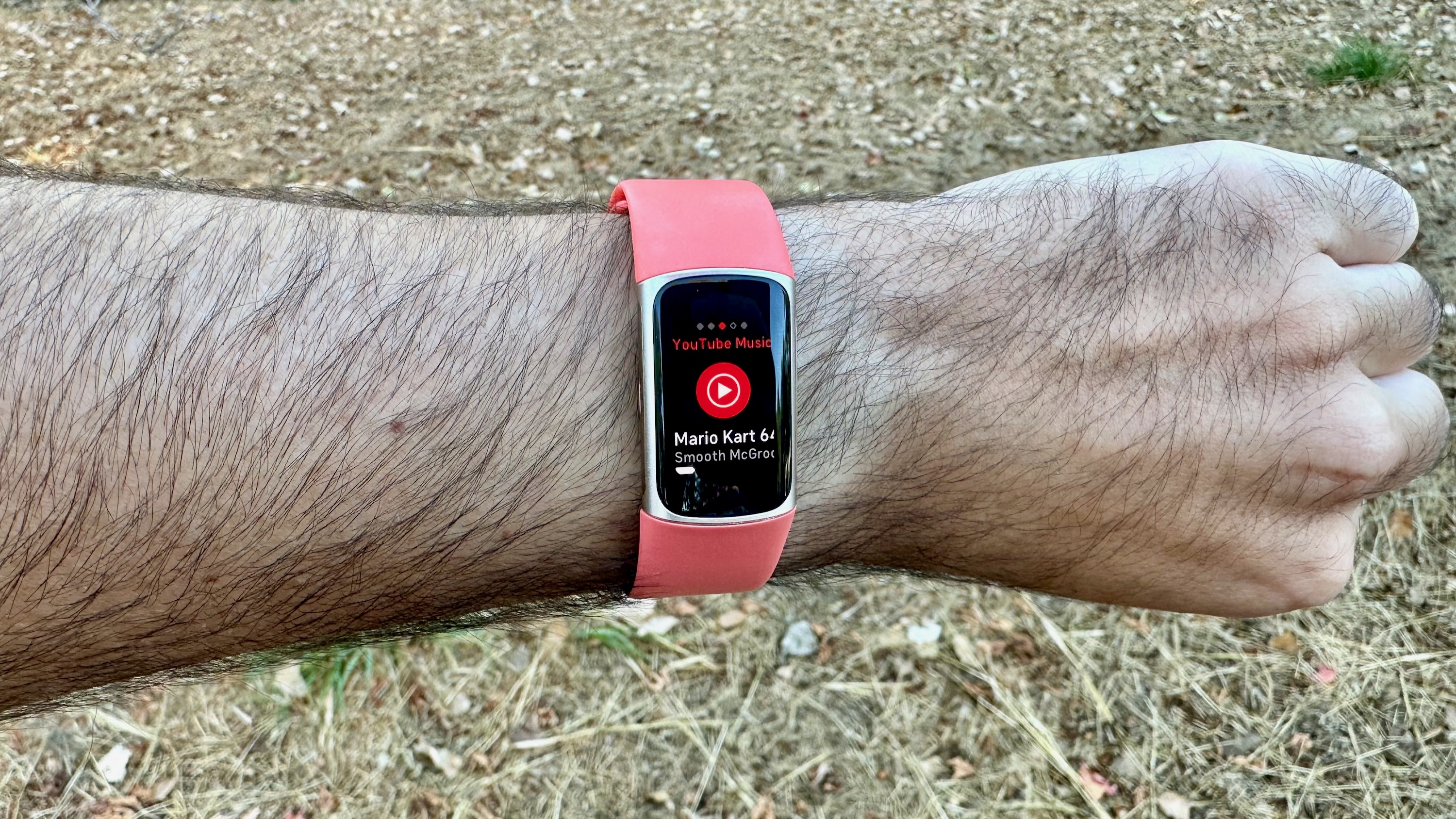Fitbit Charge 6 vs. Sense 2: The best fitness tracker or its deluxe sibling?
The Charge 6 costs half as much as the Sense 2 with most of the same tools — but each has its strengths and exclusives.

Lower price, similar tricks
The Fitbit Charge 6 gives you heart rate algorithms stolen from the Pixel Watch, YouTube Music controls, Peloton connectivity, and a more comfortable design if you care about sleep tracking. The money you save compared to the Sense 2 will buy you another couple of years of Fitbit Premium. That said, get ready for a tiny display.
For
- Better size, weight for sleep tracking
- YouTube Music controls
- Connects to gym equipment
- About half the price
Against
- No altimeter, gyro, or cEDA
- No calling or voice assistant
- Tiny, dim display makes notifications harder to read

No compromises
The Fitbit Sense 2 gives you a beautifully bright display that's much more readable and useable, with a design that's not much heavier than the Charge 6. It may not have some of the Charge 6's new tricks, but you may find its elevation tracking, voice commands, and on-wrist calling much more useful. That said, you may want to wait for a sale on this expensive watch.
For
- Larger, brighter display
- Bluetooth calls and Alexa voice assistant
- All-day stress tracking
- Altimeter and gyroscope
Against
- No YouTube Music controls
- No HR broadcasting
- More expensive
Despite their different prices and looks, the Fitbit Charge 6 vs. Sense 2 comparison isn't as different as you might expect. The Charge 6 tracker has most of the same features as the Sense 2 flagship watch, and even a couple of unique tricks that the Sense 2 has yet to receive months later.
The Sense 2, on the other hand, has the benefit of a much more readable display and a few exclusive health tools. While it costs twice as much, we've frequently seen its price dip by $100 during deals events, making it more tempting to upgrade than you might assume.
Below, we'll note all of the similarities between the Fitbit Charge 6 and Sense 2, before explaining the specific features that only come with one of them.
Fitbit Charge 6 vs. Sense 2: What's the same?
| Category | Fitbit Charge 6 | Fitbit Sense 2 |
|---|---|---|
| Display | 1.04-inch AMOLED (326 ppi); 450 nits brightness; Gorilla Glass | 1.58-inch AMOLED (300ppi); 1,000 nits brightness; Gorilla Glass 3 |
| Materials | Recycled aluminum case; silicone band with aluminum buckle | Aluminum case; silicone band with aluminum buckle |
| Battery life | 7 days; about 5–6 hours GPS | 6 days; about 5 hours continuous GPS |
| Charge time | 2 hours (proprietary cable) | 2 hours (proprietary cable) |
| Health sensors | HRM, SpO2, ECG, EDA, skin temperature | HRM, SpO2, ECG, cEDA, skin temperature, ambient light, accelerometer, vibration, NFC |
| Other sensors and tracking | Accelerometer, ambient light, GPS + GLONASS, vibration motor | Accelerometer, altimeter, ambient light, GPS + GLONASS, gyroscope, microphone, speaker, vibration motor |
| Connectivity | Bluetooth 5.0; NFC; HR broadcast on gym equipment | Bluetooth 5.0; NFC |
| Tap-to-pay | Google Wallet | Google Wallet |
| Music playback | YouTube Music only (w/ sub) | None |
| Navigation | Google Maps (w/ connected phone) | Google Maps (w/ connected phone) |
| Sports modes | 40 | 40 |
| Water resistance | Up to 50 meters | Up to 50 meters |
| Dimensions | 1.52 x 0.73 x 0.46 inches | 1.50 x 1.50 x 0.45 inches |
| Weight | 30g | 37.6g |
Even though the Fitbit Charge 6 and Fitbit Sense 2 don't share much resemblance on the surface, they have most of the same tracked health data beneath the surface.
They both track heart rate (HR), resting HR, dangerously high or low HR readings, irregular heart rhythm (AFib), blood oxygen (SpO2), breathing rate, menstrual health, and skin temperature. Specifically for AFib detection, you can check actively with the ECG sensor or receive passive warnings from the optical sensor.
Both trackers will also count steps and judge how hard you're working out by using a 3-axis accelerometer for wrist tracking.

The Charge 6 is one of the only fitness bands to offer built-in GPS and GLONASS, matching the Sense 2. Both will use "Dynamic GPS" and pull data from your phone to try and improve your location accuracy, but will also work as a standalone tracker if you leave your phone at home.
While the Charge 6 technically lasts one day longer per charge than the Sense 2 (seven days vs. six days), it lasts the same amount of time when tracking location data (about five hours each). They even take the same amount of time to recharge to 100%: two hours apiece.

On the software side, the Fitbit Charge 6 and Sense 2 share the same 40 sports modes for tracking activities, plus the same auto-recognized activities like running or cycling. This was one of the major Charge 6 upgrades over the Charge 5, as the latter only supported six on-device modes at a time.
They also share two key Google apps, courtesy of Fitbit's new parent company. You can use tap-to-pay via Google Wallet or follow Google Maps directions on your wrist. Keep in mind that for Maps, you must search for a destination and start your trip on your connected phone. Also, the Sense 2's larger display does leave room for more navigational data, though the Charge 6 has the essentials.
Both the Sense 2 and Charge 6 come with six free months of Fitbit Premium. To briefly summarize the benefits, you can expect a Sleep Score and Profile, a Daily Readiness Score based on your tracked sleep recovery and activities, health trends over time, guided workouts or meditations with pro coaches, and recommended recipes.
Of course, after your trial ends, you'll need to keep paying for Premium with either Fitbit.

Lastly, both the Sense 2 and Charge 6 have a side button...sort of!
The Sense 2 has a physical button, replacing the wonky haptic button of the original Sense. Instead of having to squeeze the pebble to activate the display or go back to the home menu, you just tap the petite, convenient button. Our reviewer called it a "much-needed improvement" for usability.
The Charge 6 does use a haptic button instead of a physical one, so you do squeeze the body to activate it. The difference is that it's half the width of the Sense 2, so this finger position is significantly more natural and easy to pull off. Our reviewer, who was skeptical about this feature, ended up preferring it: "it works as it should," he said, "without being prone to accidental presses like a physical button."
So even though the Sense 2 and Charge 6 buttons are different, the quality of the user experience is comparably good whichever you choose.
Fitbit Charge 6 vs. Sense 2: Why the Sense 2 is better

With the Fitbit Sense 2, you get a few key upgrades over the Charge 6 that you might not want to miss.
The most obvious is the mic/speaker combo, used for Bluetooth calling or speaking to voice assistant commands. We're still frustrated that Fitbit lost access to Google Assistant, something the original Fitbit Sense offered, but Alexa is certainly better than nothing.
You also get a 1.58-inch display that hits 1,000 nits of brightness. Even though some of the best Android watches now hit 2,000 nits, 1,000 is still better than most fitness watches, and much more visible in direct sunlight than the Charge 6's 1-inch, 450-nit AMOLED display.
Reading notifications is much easier, more menu text is visible on screen, and the watch face can show multiple data fields at once — while the Charge 6 only shows one at a time. For something like inputting your PIN for an NFC payment, you can enter it in moments on the Sense 2, while the Charge 6 makes you swipe up and down to find the right number four times.

In terms of fitness tracking, the Sense 2 has a gyroscope that works in tandem with an accelerometer to provide more accurate wrist tracking during activities, making it nice to have but not necessarily essential.
The bigger upgrade is the altimeter: tracking elevation change is essential for outdoor tracking, especially for runners or cyclists. Otherwise, there's no context for why you're running slower with a higher heart rate than usual, which will adjust Fitbit's Cardio Score estimate and its workout recommendations.
Plus, the Charge 6 has some documented GPS accuracy issues, though the GPS-only Sense 2 isn't necessarily much better as a GPS-only device.
Rounding out the Sense 2's upsides, it has a continuous EDA sensor (cEDA) that measures your stress levels and heart rate variability throughout the day. The Charge 6 has a manual EDA sensor that makes you sit still for three minutes to take a stress reading, making it much less convenient to get that data.
On top of that, only the Sense 2 lets you take manual skin temperature readings, while the Charge 6 only collects this data passively at night.
Fitbit Charge 6 vs. Sense 2: Why the Charge 6 is better

When Google announced the Fitbit Charge 6, it explained how it has the "most accurate heart rate tracking on a Fitbit tracker yet," thanks to an "improved machine learning algorithm that brings over innovation."
So even though the Sense 2 has a "multi-path" optical HR sensor that gathers more accurate data, the Charge 6 closes the gap with ML data to find the same result during vigorous activities when your tracker may not stay flush with your wrist. And it does so at half the price of the Sense 2.
On that same note, the Charge 6 gathers most of the same health data as the Sense 2 — much more than the pricier Versa 4 — with a more comfortable form factor that's better suited for sleep tracking. The Sense 2 is admittedly much thinner and lighter than your typical fitness watch, but you're still more likely to ignore the weight of the Charge 6 while working out.

As for Charge 6 exclusives, only the fitness tracker has a YouTube Music widget for controlling your playlists. The Sense 2 has no music playback controls at all, a frustrating omission compared to most of the best fitness trackers. That gives the Charge 6 an edge, but only if you pay for YouTube Premium; Spotify or Apple Fitness fans are out of luck.
A more universal perk is the Charge 6's ability to broadcast your heart rate via Bluetooth to treadmills, ellipticals, rowers, and exercise bikes. Nordic, Peloton, Concept2, and Tonal are the current partners, and Fitbit has promised other partners down the line.
Fitbit also gave the Charge 6 a "Zoom + Magnification" feature to make it easier to read notifications on the small display, something the Sense 2 doesn't have. That said, the Sense 2 doesn't really need this since the display is so much larger.
Fitbit Charge 6 vs. Sense 2: Which should you buy?
We ranked the Fitbit Charge 6 and Sense 2 at #2 and #3 for our best Fitbit guide, respectively. But that doesn't mean the Sense 2 is worse, merely that the Charge 6 is the better bargain with 80–90% of the same tools for half the price.
The Fitbit Sense 2 may be the better choice for outdoor athletes, thanks to the brighter display, altimeter for elevation tracking, and the ability to take phone calls on the go with your phone in your pocket. But if you don't care about these features, or don't need continuous stress-tracking data, then you shouldn't overpay for the Sense 2.
The Fitbit Charge 6 may suit indoor athletes better because of its Broadcast HR tool and the fact that it won't obstruct your wrist as much when strength training. It's also more comfortable when worn at night, with most of the same health metrics. Just keep in mind that its small display will frustrate you if you're someone who reads a lot of notifications on your wrist.
Fitbit may also release a new Fitbit Sense 3 in 2024, if it follows its usual two-year release pattern. If you're more tempted by a Fitbit watch, you may want to wait until this summer in the hope of something better, unless you see the Sense 2 at a great price. We don't expect a Fitbit Charge 7 anytime soon, so the Charge 6 is worth buying now if you're at all interested.

The best fitness tracker
Choose the Fitbit Charge 6 for its lightweight design, gym equipment connectivity, YouTube Music controls, or its more reasonable price point. Skip the Charge 6 if you care about a readable display or you're a runner or cyclist who needs to know how many floors you've climbed during a workout.

Smartwatch upgrade
Choose the Fitbit Sense 2 if you want every single feature that Fitbit has to offer without any compromise, along with a more traditional smartwatch form factor. Skip the Sense 2 if you're on a budget, if you want to prioritize something lighter, or if you want to hold out for the Sense 3.
Be an expert in 5 minutes
Get the latest news from Android Central, your trusted companion in the world of Android

Michael is Android Central's resident expert on wearables and fitness. Before joining Android Central, he freelanced for years at Techradar, Wareable, Windows Central, and Digital Trends. Channeling his love of running, he established himself as an expert on fitness watches, testing and reviewing models from Garmin, Fitbit, Samsung, Apple, COROS, Polar, Amazfit, Suunto, and more.
